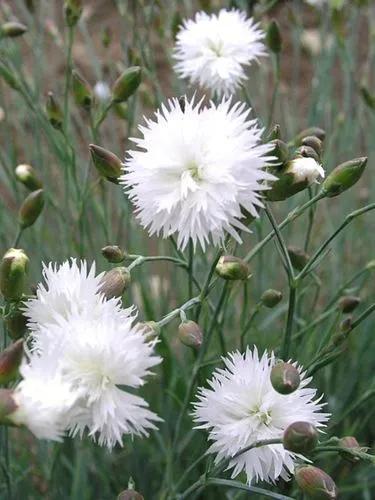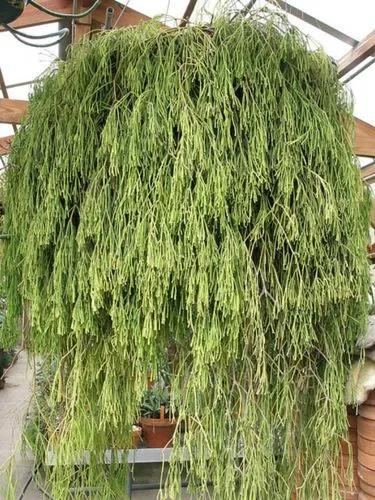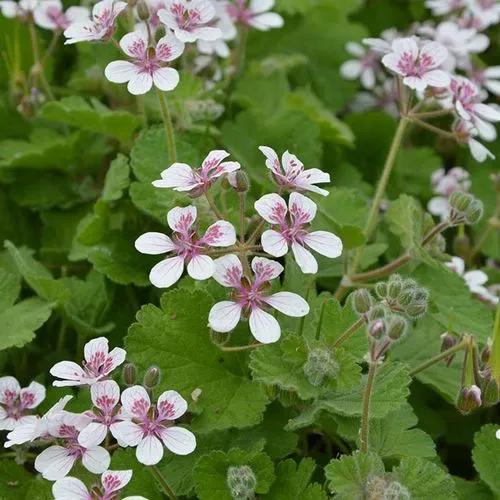This is a large, perennial, and epiphyte, or at times a terrestrial plant, growing in sometimes spectacular clumps, attached to the branches of tall trees. The white, needle-like, aerial roots are characteristic for this orchid. They point upwards, taking the form of a basket around the tall, many-noded, fusiform, canelike, yellow pseudobulbs, catching the decaying leaves and detritus upon which the plant feeds. These pseudobulbs can develop a gigantic size, up to 60 cm long. This robust orchid can grow very large, sometimes with an estimated weight over a tonne. Even eagle owls (Bubo bubo) have been seen to make their nest in such a clump. The roots which penetrate the substrate can become very thick and cord-like to support the weight of the plants, and are typically very different in form than the roots which comprise the trash basket as the aerial roots are non-absorbing. Breakdown and absorption of nutrients by the plant from the trash basket is performed by its fungal symbionts and the active absorbing roots. These pseudobulbs carry on their top 6 to 7, narrowly ligulate-lanceolate, acute, plicate, leathery leaves. They give rise to a paniculate inflorescence, up to 85 cm long, with many (10 to 100), delicately scented flowers, 6 cm across. The three-lobed lip grows into three yellow projections. The tepals are yellow or greenish yellow, lightly or heavily marked with brown spots. The flowers are short-lived, seldom lasting longer than 10 days, but are produced in abundance provided the plants have received high light levels throughout the year.
Ansellia Care
Ansellia



What is the plant
How to Care for the Plant

Water

Moderate humidity of 50% or so with ample water during the growing season, allowing to dry between waterings. Allow to remain dry for an extra couple of days during winter months.

Pruning

Pruning: Remove dead and diseased leaves by cutting them at the base with sharp scissors or knife.

Fertilizer

Depends on your growing media, but a balanced formula, applied regularly will work fine. These plants grow quickly during warmer months and can reach prodigious size, so a good supply of fertilizer is a must.
Ease your plant care routine with PlantIn's personalized system.

Sunlight

Bright, as for cattleyas, may take nearly full sun in tropical conditions.

Temperature

Cattleya conditions – 55 – 60 F. nights, 80 – 90 F. days.
What's wrong with your plant?
Related Plants
Discover more plants with the list below
Popular articles






